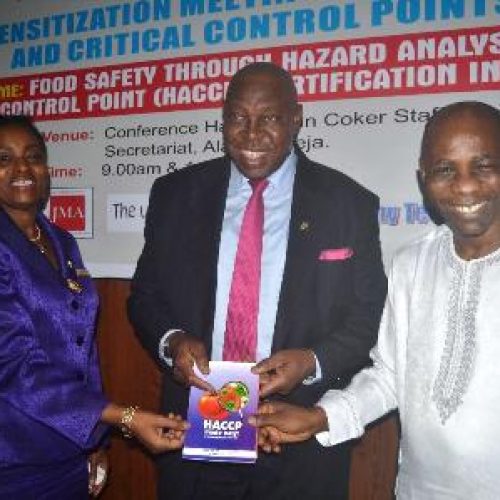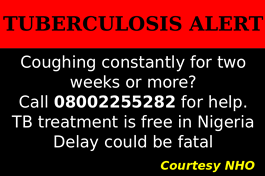Facts you should know about Zika virus infection, Zika fever
What is Zika virus infection?
Zika virus infection is caused by the bite of an infected Aedes mosquito, usually causing mild fever, rash, conjunctivitis, and muscle pain.
The virus was isolated for the first time in 1947 in the Zika forest in Uganda. Since then, it has remained mainly in Africa, with small and sporadic outbreaks in Asia. In 2007, a major epidemic was reported on the island of Yap (Micronesia), where nearly 75% of the population was infected.
On 3 March 2014, Chile notified PAHO/WHO that it had confirmed a case of indigenous transmission of Zika virus on Easter Island, where the virus continued to be detected until June 2014.
In May 2015, the public health authorities of Brazil confirmed the transmission of Zika virus in the northeast of the country. Since October 2015, other countries and territories of the Americas have reported the presence of the virus.
What are the symptoms?
The most common symptoms of Zika virus infection are mild fever and exanthema (skin rash), usually accompanied by conjunctivitis, muscle or joint pain, and general malaise that begins 2-7 days after the bite of an infected mosquito.
One out of four infected people develops symptoms of the disease. Among those who do, the disease is usually mild and can last 2-7 days. Symptoms are similar to those of dengue or chikungunya, which are transmitted by the same type of mosquito. Neurological and autoimmune complications are infrequent, but have been described in the outbreaks in Polynesia and, more recently, in Brazil. As the virus spreads in the Americas, giving us more experience with its symptoms and complications, it will be possible to characterize the disease better.
How is Zika virus transmitted?
Zika virus is transmitted to people through the bite of an infected Aedes mosquito. This is the same mosquito that transmits dengue and chikungunya.
Can it be transmitted through blood or sexual contact?
In general, the Zika virus needs a vector (a means of transportation) to infect people. That vector is the mosquito. The virus has also been isolated in semen, and one case of possible person-to-person sexual transmission has been described, but not confirmed.
Zika can be transmitted through blood, but this is an infrequent mechanism. The usual recommendations for safe transfusions should be followed (e.g., healthy volunteer donors).
Can it be transmitted from mother to child?
There is little information on transmission from mother to baby during pregnancy or childbirth. Perinatal transmission has been reported with other vector-borne viruses, such as dengue and chikungunya. Studies are now being conducted on possible mother-to-child transmission of the virus and its possible effects on the baby.
What treatment is there?
Treatment consists of relieving pain, fever, and any other symptom that inconveniences the patient. To prevent dehydration, it is recommended to control the fever, rest, and drink plenty of water. There is no vaccine or specific drug for this virus.
Can it cause death?
In this Region, it is a new virus that up until now has had a very limited geographical and demographic distribution, and there is no evidence that it can cause death. However, sporadic cases have been reported of more serious manifestations and complications in patients with preexisting diseases or conditions, causing death.
Who is at risk of Zika infection?
Anyone not previously exposed to the virus and who lives in an area where the mosquito is present, and where imported or local cases have been reported, may be infected. Since the Aedes mosquito is found throughout the Region (except in continental Chile and Canada), it is likely that outbreaks will occur in other countries that have not yet reported any cases.
How is Zika diagnosed?
In most people, diagnosis is based on clinical symptoms and epidemiological circumstances (such as Zika outbreak in the patient’s area or trips to areas where the virus is circulating).
Blood tests can help to confirm the diagnosis. Some (virological PCR tests) are useful in the first 3-5 days after the onset of symptoms, while others (serological tests) detect the presence of antibodies but are useful only after five days.
Once it has been demonstrated that the virus is present in a given area or territory, confirmation of all cases is not necessary, and laboratory testing will be adjusted to routine virological surveillance of the disease.
Which is the difference between Zika, dengue, and chikungunya?
All these diseases present similar symptoms, but certain symptoms suggest one disease or another:
Dengue usually presents with higher fever and more severe muscle pain. There can be complications when the fever breaks: attention should be paid to warning signs such as bleeding.
Chikungunya presents with higher fever and more intense joint pain, affecting the hands, feet, knees, and back. It can disable people, bending them over so that they cannot walk or perform simple actions such as opening a water bottle.
Zika does not have clearly characteristic features, but most patients have skin rashes and some have conjunctivitis.
Is there a relationship between Guillain-Barré syndrome and Zika virus?
An increase in Guillain-Barré syndrome (GBS) has been observed in areas where a Zika virus epidemic has been documented (e.g., in French Polynesia and Brazil).
However, a direct causal relationship has not been established between Zika virus infection and GBS. Prior infection with dengue or genetic factors could contribute to or increase cases of GBS. Several studies are underway to better establish the relationship between Zika and GBS.
GBS occurs when a person’s immune system attacks itself, in particular affecting the cells of the nervous system. This process can be initiated by infection with various viruses or bacteria. The main symptoms include muscular weakness and tingling (paresthesia) in the arms and legs, and severe complications can occur if the respiratory muscles are affected. The most seriously ill patients need attention in intensive care units.
CIRCULATION OF ZIKA VIRUS
Which countries have reported cases of Zika in the Americas?
On 3 March 2014, Chile notified PAHO/WHO that it had confirmed a case of indigenous transmission of Zika virus on Easter Island, where the virus continued to be detected until June 2014.
In May 2015, the public health authorities of Brazil confirmed the transmission of Zika virus in the northeast of the country. Since October 2015, other countries and territories of the Americas have reported the presence of the virus.
What causes rapid transmission in an area?
There are two factors for rapid transmission (documented in other countries): (1) Since this is a new virus to the Americas, the entire population is susceptible, lacking defenses to Zika virus; and (2) The Aedes mosquito is widespread in the Region, given the climatic conditions, temperature, and humidity in tropical countries.
Is it advisable to travel to countries where Zika virus is circulating?
PAHO/WHO does not recommend any travel or international trade restrictions related to Zika virus outbreaks. Travelers are advised to take the suggested precautions to prevent mosquito bites.
How many Zika cases have been reported in the Region of the Americas?
Countries begin reporting when they detect the circulation of the virus in their territories. However, maintaining a case count is difficult because symptoms of the disease tend to be mild and not everyone affected is seen by health services. What is most important is to detect the circulation of the virus, strengthen the response of health services, and step up surveillance of serious cases and complications.
PREVENTION
What measures should be taken to prevent Zika virus infection?
Prevention involves reducing mosquito populations and avoiding bites, which occur mainly during the day. Eliminating and controlling Aedes aegypti mosquito breeding sites reduces the chances that Zika, chikungunya, and dengue will be transmitted. An integrated response is required, involving action in several areas, including health, education, and the environment.
To eliminate and control the mosquito, it is recommended to:
• Avoid allowing standing water in outdoor containers (flower pots, bottles, and containers that collect water) so that they do not become mosquito breeding sites.
• Cover domestic water tanks so that mosquitoes cannot get in.
• Avoid accumulating garbage: Put it in closed plastic bags and keep it in closed containers.
• Unblock drains that could accumulate standing water.
• Use screens and mosquito nets in windows and doors to reduce contact between mosquitoes and people.
To prevent mosquito bites, it is recommended that people who live in areas where there are cases of the disease, as well as travellers and, especially, pregnant women should:
• Cover exposed skin with long-sleeved shirts, trousers, and hats
• Use repellents recommended by the health authorities (and apply them as indicated on the label)
• Sleep under mosquito nets.
People with symptoms of Zika, dengue, or chikungunya should visit a health centre.
Courtesy: WHO/PAHO
About author
You might also like
Lagos unveils code of conduct handbook for traditional medicine practitioners
The Lagos State Government yesterday unveiled a code of conduct handbook for traditional, complementary and alternative medicine practitioners as part of efforts to regulate their practice in the State. The
Media experts, others identify what Nigeria should do to boost family planning
ABUJA – Leading health journalists, government functionaries, non-governmental organizations and other intellectuals have expressed hope that Nigeria would succeed in its efforts on family planning if some measures are taken
Lagos moves to check food, water, beverage contamination in eateries, restaurants, hotels, others
Sensitizes stakeholders on HACCP The Lagos State Government has moved to check food and water contamination in eateries, restaurants and hotels across the state, charging stakeholders to embrace the Hazard







0 Comments
No Comments Yet!
You can be first to comment this post!